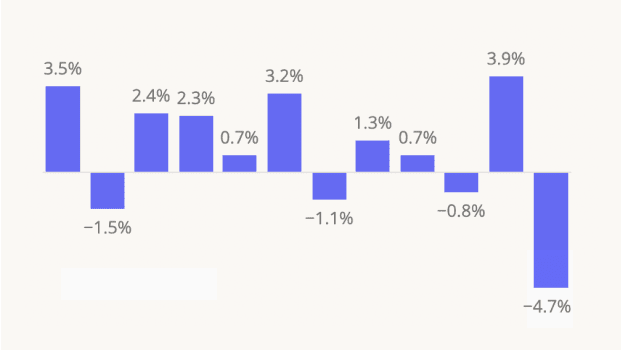Nike has recently pivoted away from its "Consumer Direct Acceleration" strategy in favor of a more multi-channel distribution approach. What does the data say about this shift? We dove into traffic numbers and audience composition metrics to find out.
Nike's Strategic Pivot
In 2020, Nike introduced its "Consumer Direct Acceleration" strategy that had aimed to expedite the company's DTC pivot in an effort to regain control of the brand and own the customer relationship directly. But the emphasis on owned channels did not yield the desired results – in fact, the move away from wholesale may have helped smaller sneaker companies take over shelf space and market share from the legacy sportswear brand.
In mid-2023, Nike shifted to a more balanced, multi-channel approach, and by late 2023, Nike was once again selling its products through retail partners such as DSW and Macy's. More recently, in May 2025, Nike announced that it would be resuming direct sales on Amazon – a channel the brand exited in 2019 – in an effort to reach customers where they shop.
Diving into year-over-year monthly traffic numbers for Nike stores nationwide underscores the merits of the recent strategic shift. Visits to Nike stores have been trending negative for eight months straight, validating the recent company-wide pivot back towards a more holistic, multi-channel approach.
Multi-Channel Brick & Mortar Strategy Increases Brand Reach
Using Spatial.ai PersonaLive data to compare the audience composition in Nike's captured market with the audience composition in some captured markets of some of its largest retail partners further highlights the advantages of Nike's new multi-channel approach.
The data shows that Nike already does a great job of reaching "Ultra Wealthy Families," "Young Professionals," and "Educated Urbanites" through its owned stores – the share of these segments in Nike's trade area is larger than in the trade areas of any of its main partners. But both DSW and DICK's Sporting Goods reach more suburban families than Nike, with a larger share of "Wealthy Suburban Families" and "Upper Suburban Diverse Families" in their trade areas than in Nike's. And Macy's and Foot Locker seem to be better positioned to reach "Near-Urban Diverse Families" and "Young Urban Singles".
The distinct audience composition of each retail partner suggests that a varied wholesale approach is necessary to achieve comprehensive market coverage, allowing Nike to reach a far broader spectrum of consumers than its own stores can capture alone.
Advantages of a Balanced Distribution Strategy
Nike's return to a multi-channel approach suggests that achieving comprehensive market coverage requires a balanced strategy, leveraging partners to engage with a broader spectrum of consumers in addition to building out owned DTC channels.
For more data-driven retail insights, visit placer.ai/anchor.




.svg)





.png)
.png)

.png)
.png)






.avif)


